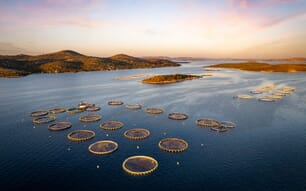The total amount of catch for the long-distance fisheries amounted to 20,000 MT, a 66 percent decrease compared to 2014. The main deep sea activity areas were the Central Atlantic region (CECAF) in Mauritanian (EEZ) waters. A relatively small portion of the catch is made from fishing activities in the North Atlantic in the NAFO and NEAFC convention areas, where Latvia has fishing quotas for shrimp, redfish and mackerel.
Pelagic species (herring and sprats) are the mainstay of the Latvian harvests accounting for almost 90 percent of the total fish catch in Baltic Sea and the Gulf of Riga. Fishing activities vary from year to year because they depend on fish feeding conditions, water temperature and level of water pollution.
The annual Baltic Sea fishing quota is negotiated on an annual basis by the EU's agriculture and fisheries ministers. The International Council for the Exploration of the Sea (ICES) is a global organization that uses science to develop advice to support sustainable use of the oceans. ICES recommends to the Council the size of quotas for the next year. In October 2015 the Council of Ministers agreed on a 20 percent reduction of the 2016 quotas for cod compared to 2015, resulting in a total allowable catch (TAC) of maximum 41,143 MT for the Eastern stock and 12,720 MT for the Western stock of the Baltic Sea. The 2016 quotas for sprat were lowered by 5 percent compared to 2015, to a TAC of maximum 202,320 MT.
In 2015 the total catch in both the Baltic Sea and the Gulf of Riga amounted to 62,000 MT, an increase of 3 percent compared to 2014. The main species caught were Baltic sprat, Baltic herring and cod.
In 2015 the Latvian fishing fleet consisted of more than 700 fishing vessels. Out of this number, 628 were the vessels used for coastal fishing, 68 for Baltic Sea offshore fishing and seven for long-distance ocean fishing. The majority of fishing vessels used for costal fishing are less than five meters long. The fishing fleet operating beyond coastal waters decreased over the past few years due to a scrapping program by the EU. The program reduces the fishing capacity in response to the depleted fish stocks.
Catches in the Baltic Sea offshore fisheries constitute 50 percent of the total Latvian fishing fleet catch.
The main species harvested by the offshore fishermen are cod, herring and sprat. Latvia has seven high seas fishing vessels operating in the Central Atlantic region, Mauritania and Morocco waters. In 2015 the high seas catches in the North and Northeast Atlantic amounted to 20,000 MT and were 66 percent lower than in 2014. Main species caught were mackerel, horse mackerel, sardinella and redfish.
Fishing in inland waters has significantly decreased within the last few years mainly due to the prohibition of fishing with nets and traps in numerous lakes and rivers. In addition, demand for fresh water fish from the processing industry is low. The main species harvested are bream, pike and river lamprey.
Aquaculture sector
Although aquaculture is developing fast in Latvia, it is still a new branch of production. Most farms are located in the interior of the country. There is no aquaculture activity in marine waters. There are 160 aquaculture farms registered in Latvia. The main species produced are carp, trout, goldfish, pike, catfish and sturgeon. It is estimated that in 2015 production of fish by the aquaculture sector amounted to 600 MT, of which carp accounted for more than 80 percent. Aquaculture factories (mainly state owned farms) also supply fry, fingerlings and smolts for release in natural waters in order to compensate for damage to fish resources caused by the development of hydropower plants on rivers, pollution of water and the degradation of natural habitats.


